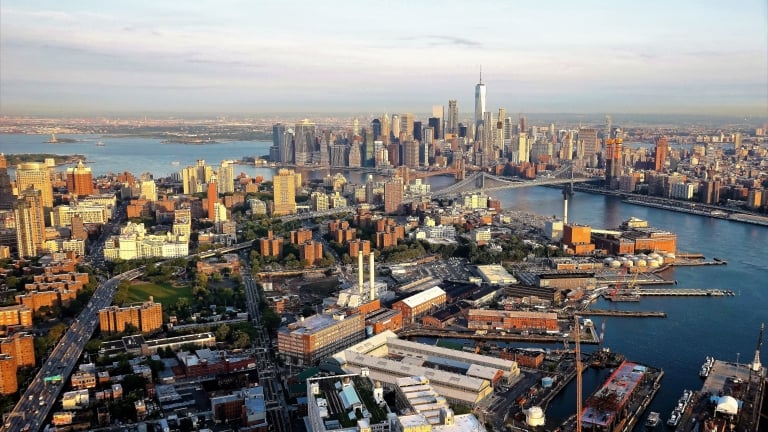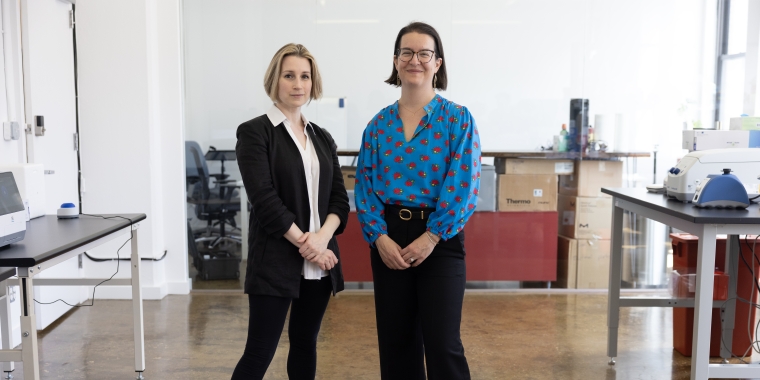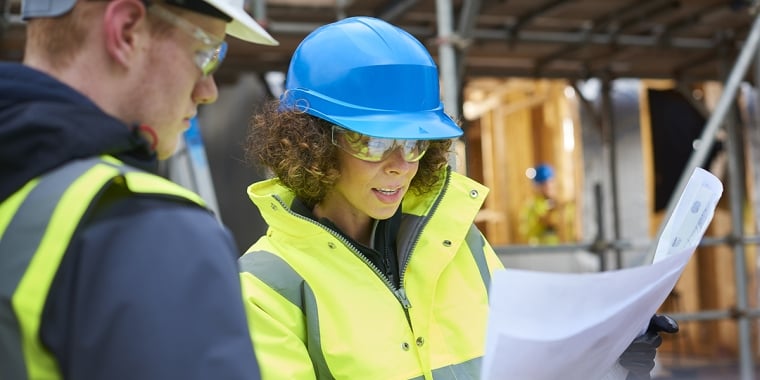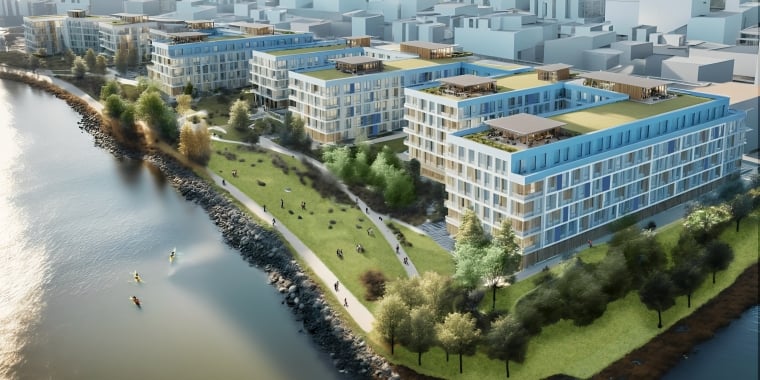NYCEDC Releases Inaugural “State of the Economy” Report, Providing In-Depth Data and Analysis on New York City’s Strong Recovery

Report Shows New York City Hit Record-High Employment and Labor Force Participation, Is Top Destination for Talent, and Has Diversifying Economy with AI Transformation Underway
Nearly Five Years Since the Start of Covid-19, Office Vacancy, Commercial Real Estate Supply, Remote Work, Tourism, and Population Have Stabilized and Show Signs of Improving
Pre-pandemic Challenges Such as Housing Affordability, Income Inequality, and Racial Disparities Remain, Targeted by Policy Action from City and State Leaders
NEW YORK, NY—New York City Economic Development Corporation (NYCEDC) today released a new report, “The State of the New York City Economy”, offering comprehensive data and analysis on the City’s economy. The report highlights the strength and resilience of New York City’s post-pandemic economy, with a number of positive points including record-high employment figures, continued attractiveness to young talent, and growth in new, innovative sectors like the life sciences, green economy, and tech. It also notes that negative trends in office and retail vacancy, tourism, and population have stabilized or reversed.
Key takeaways from the report include:
- Employment and labor force participation are at all-time highs: The city’s labor market is strong and improving, with a record number of private sector jobs (4,151,400 annual average) and a record high labor force participation rate (62.8%) as of September 2024.
- Over the past decade, the economy has diversified, helping it become more resilient to sector-specific shocks: New York City’s status as a major global financial capital remains secure, with 21,500 more jobs in the finance sector today than there were pre-pandemic. But rapid growth of the tech, life sciences, healthcare, and green economy sectors has provided for a greater diversity of high-growth, and high- or middle-wage jobs in the city.
- The AI transformation has begun: New York City is the applied AI capital of the world, home to over 2,000 AI startups and 40,000 workers with AI and AI-related skills. NYCEDC estimates that in New York City, for every job that gets displaced by AI, between 4 and 10 jobs might be augmented by AI.
- New York City continues to attract talent, business, investment, and tourism from around the world: New York City leads the nation in attracting young talent, with nearly 500,000 recent college graduates choosing to live here since 2021. The city also continues to be a global leader in attracting investment – New York City attracted over $11 billion in Foreign Direct Investment and over $97 billion in Venture Capital funding between 2021 and 2023 – facilitating future business growth. In 2024, nearly 65 million visitors came to New York City – the second-highest figure in city history and a 3.5 percent increase from the previous year.
- Remote work and commercial real estate have stabilized: The New York City metro area has the lowest rate of fully remote office workers among large US cities, and most office workers have stabilized on a schedule of three in-person days per week. Office vacancy rates declined in Q2 and Q3 2024, for the first time since the pandemic.
- The flight to quality continues in the office market: Occupied square footage in Manhattan trophy buildings is up 19 percent over the past 5 years, while occupied square footage in Manhattan non-trophy buildings is down 9 percent over that same time period. And office visitation metrics are higher for trophy office buildings compared to non-trophy buildings. The city is supporting renovation of office space in Manhattan’s central business districts with its M-CORE program, intended to create the type of high-quality office space that has seen increased demand in recent years.
- Population is at an inflection point: According to Census estimates, New York City lost over half a million residents from April 2020 to July 2023, although 83% of the decline occurred in the first two years of the pandemic. There is preliminary data that population will stabilize or even grow in 2024. Despite population losses, annual city tax revenues never declined during the pandemic and are now at record highs.
In addition to strong and stabilizing metrics, the report analyzes economic challenges that remain.
- Housing affordability remains the defining challenge, but the City is taking key policy steps to address the issue: Two-thirds of New York City households are renters, and the 2023 rental vacancy rate of 1.4% is a multi-decade low, putting upward pressure on housing costs. Job growth has far outpaced housing growth. From 2011 to 2023, New York City added 895,000 jobs but just 353,000 housing units. New York City and State are enacting comprehensive policies to mitigate the affordability crisis. The “City of Yes for Housing Opportunity” plan is modernizing the city’s zoning code, to create an estimated 82,000 additional housing units, while the state has introduced new 485-x and 467-m programs to incentivize the construction of affordable housing and office-to-residential conversions, respectively.
- Racial disparities on unemployment and labor force participation remain high, but are improving: The unemployment rates for Black and Latino New Yorkers stood at 8.5% and 6.7% in the third quarter of 2024, significantly lower than their pandemic peak but still higher than the white unemployment rate of 3.3%. While the labor force participation rate has improved for New Yorkers of all races since 2022, the white labor force participation rate, at 67.5% in Q2 2024, is well above the rates for other races and ethnicities.
- Income inequality remains a challenge: Income inequality has slightly widened in New York City over the past decade, driven by the fact that the city’s high earners make much more here than other cities, while low earners make close to what they would elsewhere. For example, a lawyer in New York City makes 55.5% more than the median lawyer nationwide, while a retail salesperson in New York City makes 12.8% more than the median retail salesperson nationwide.
“The facts and figure say it loud and clear: New York City’s economy is back and better than ever,” said New York City Mayor Eric Adams. “From breaking the city’s all-time jobs record to continuing to attract the best talent across the globe to leading the way in emerging sectors, like the green economy and life sciences, our best days still lie ahead of us. While today we celebrate, tomorrow we continue the work of ensuring that our shared economic prosperity reaches every zip code across the five boroughs and of closing the racial unemployment gaps that, for too long, has persisted within our city. As we look towards our upcoming State of the City address, I am proud to let New Yorkers know that the state of our economy is stronger, and we plan to soar to new heights in 2025.”
“Just four years after the nadir of the COVID 19 pandemic, New York City has more jobs than ever before and the economy is strong, diversified and primed for continued growth,” said First Deputy Mayor Maria Torres-Springer. “The data in NYCEDC's “State of the Economy” report are unarguable: New York City is the single most important economic center in the world, and the Adams administration will continue to invest in policies and programs that propel the city forward, foster innovation, stimulate economic activity and address our biggest challenges, including creating a more inclusive economy that works for all New Yorkers.”
“New York City’s economy has hit historic milestones this year with higher levels of employment and labor force participation than we’ve seen in the City’s history. New York City is the leading destination for college graduates by a long-shot, and we continue to build a diverse economy powered by high growth high wage sectors” said NYCEDC President & CEO Andrew Kimball. “Yet, large challenges remain, particularly in terms of housing and economic equality. This report presents a comprehensive, data-driven analysis that will help us usher in the next phase of post-pandemic recovery and take a longer-term approach to building a stronger and more inclusive economy that works for all New Yorkers.”
The Adams Administration has continued to take clear action in addressing both structural challenges and those brought on by the pandemic. In 2022, the City’s Blueprint for Economic Recovery laid out five key strategies for inclusive recovery, and the City and State’s “New” New York Plan set out 40 recommendations for New York City to pioneer a new model of inclusive growth. More recently, the City Council passed the mayor’s “City of Yes” plan to modernize zoning and to build up to 82,000 new housing units.
“The data and analysis in this report underscore the resilience and recovery of New York City and New Yorkers,” said NYCEDC Board Chair and Senior Partner at The Vistria Group Margaret Anadu. “Despite being hit hardest by COVID-19, we’ve come roaring back, achieving record-high job levels, labor force participation rates, growth in emerging sectors like AI. However, this report also highlights ongoing challenges—housing shortages, affordability, and inequalities. I commend the NYCEDC team for producing this thoughtful report, a roadmap to ensure progress benefits all New Yorkers.”
"The New York City economy has consistently grown since the beginning of the Adams Administration, most notably in Brooklyn and Queens,” said Kathryn Wylde, President & CEO, Partnership for New York City. “The business community credits Mayor Adams with embracing policies that encourage private investment and job creation across the five boroughs."
"EDC's data-driven, objective analysis shows New York City is on the road to recovery from the COVID pandemic,” said Jim Whelan, President, REBNY. “There are many challenges ahead which will require greater investment in the commercial and residential markets and more collaboration between the public and private sectors."
"This comprehensive report on the state of the NYC economy comes at an important time, as the aftershocks of the covid pandemic are weakening and the city looks forward to its next phase of growth,” said Stijn Van Nieuwerburgh, Earle W. Kazis and Benjamin Schore Professor of Real Estate at Columbia Business School. “The data it brings to bear paints a picture of economic strength from business dynamism, diversification into high-growth sectors, strong academic institutions, recovering tourism and commercial real estate sectors, and forward-looking policy choices to address housing affordability.”
"New York City's economy is strong and benefitting from a bold and diverse set of industries in finance, media, culture, life sciences, advanced services, tourism and global trade,” said Mitchell L. Moss, Professor of Urban Policy and Planning, Wagner Graduate School of Public Service, New York University. “As this report on "The State of the Economy" demonstrates, New York City's Economic Development Corporation continues to attract talent from across the nation and world who are reinforcing the city's role in the changing global economy."
"Although the city still faces some challenges, it's clear that there's a lot going right in New York today,” said Jonathan Bowles, Executive Director, Center for an Urban Future. “It's impressive how quickly the city's economy has recovered from the pandemic, and how far New York has come in creating a more diverse and resilient economy."
“In many ways, we have finally started to accept that the dust has settled and we live in a new normal, post-pandemic New York City,” said Lauren Melodia, Director, Economic & Fiscal Policy, Center for New York City Affairs. “This report provides an important longer view of the city’s economy today and highlights some stark problems — greater racial disparity in employment outcomes and income inequality — that we cannot accept as the new normal. The City will need to make pro-active policy interventions to address these economic challenges this year.”
“At a time of dramatic change, this inaugural State of the Economy report is a model for all U.S. cities and metros,” said Bruce Katz, Cofounder and Director, Nowak Metro Finance Lab, Drexel University. “Driven by hard evidence, the report should enable NYC to navigate an economic period defined by unusual complexity, taking advantage of accelerated technological innovation (e.g., AI) as it evolves, addressing hard challenges (e.g., housing affordability, income equality) as they manifest.”
METHODOLOGY
The research in this report uses data from local, state, and federal government agencies; from banks, consulting firms, and real estate firms, academia, and nonprofits; and from private companies that track data on real estate investments, and mobility. The report is primarily focused on 2024 data for New York City. In general, 2024 data is compared to 2023 for annual growth, 2020 is used for pandemic comparisons, and 2019 is used for pre-pandemic comparisons.
Each month, NYCEDC issues an Economic Snapshot, highlighting key data and metrics and measuring the strength of NYC's economy from month to month. To stay informed on economic trends in NYC, sign up for NYCEDC’s Economic Snapshot .
About NYCEDC
New York City Economic Development Corporation is a mission-driven, nonprofit organization that works for a vibrant, inclusive, and globally competitive economy for all New Yorkers. We take a comprehensive approach, through four main strategies: strengthen confidence in NYC as a great place to do business; grow innovative sectors with a focus on equity; build neighborhoods as places to live, learn, work, and play; and deliver sustainable infrastructure for communities and the city's future economy. To learn more about what we do, visit us on Facebook, Twitter, LinkedIn, and Instagram.


